Kunst am Bau
Even before guests enter the new rhino pagoda at Berlin Zoo, they encounter a very special object. An oversized, upside-down horn that makes people think even before they meet the live rhinos. The artwork by French artist Adrien Missika won the tender within the framework of Kunst am Bau – an integral element of building culture in Germany and part of the federal government's building commission. It can make a decisive contribution to the quality and statement of buildings because, like architecture, it is a public art. It is generally accessible and permanently present, it is an expression of a country's cultural self-image and a mirror of its creative gift, and thus a national calling card.
Kunst am Bau has a long tradition that goes back to the Weimar Republic. Since the recommendation of the German Bundestag in 1950 to allocate a fixed percentage of the construction sum to art in all federal buildings, several thousand works of art have been commissioned by the federal government. Taken together, they form an internationally unique collection of post-war art, which is, however, spread over hundreds of locations in Germany and throughout the world. Kunst am Bau must meet certain criteria: An independent artistic contribution to the building task is expected, which establishes a relationship to the architecture or the function of the building and impresses with its artistic quality and expressiveness. For this purpose, the federal government regularly organizes competitions, which are usually conducted as open or restricted open procedures.
We spoke to the artist Adrien Missika about his work.
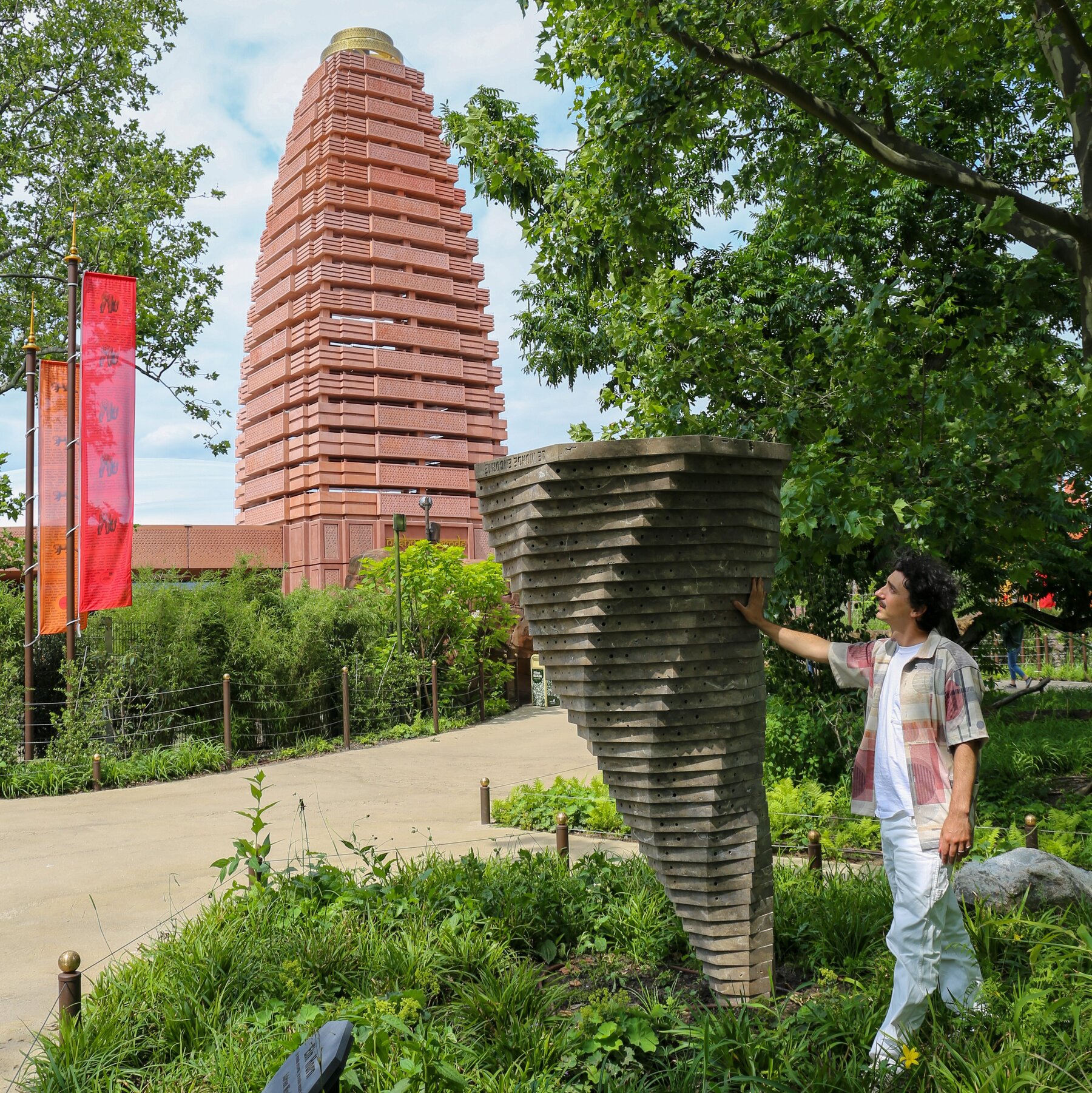
Editor: Mr. Missika, why did you submit your design in the Kunst am Bau competition?
Adrien Missika: I have a deep interest for art in public space. I really like to engage with a wide audience, especially kids and people who did not expect to encounter art on their path. My art is also quite focused on ecology, so I thought the context of the Kunst am Bau competition is very interesting: it was located in the Berlin Zoo: a legendary institution, it was about endangered species, and furthermore with an accent on the mighty Indian Rhinoceros! This was such a bizarre and interesting context that triggered my interest and imagination.
Editor: How did you get the inspiration for this design?
Adrien Missika: The design is partly referred to the Rhinoceros horn, the inversion of the horn (upside down) is a reference to one of my favorite artists: Piero Manzoni and his famous piece “Socle du Monde "(Base of the World). The holes in the sculpture are a way to make homes for wild bees at the same time as I make a monument to endangered species, a way to join utility to aesthetics, art, and animal architecture. I previously had realized my first permanent artwork in public space in a biodynamic farm in Italy called Fondazione La Raïa. The artwork is titles “Palazzo Delle Api” translate as “Palace of the Bees”. The design was a sort on inverted pyramid made of granite local stone. It could host up to 2000 wild pollinators and it has proven to work great. Ein Horn is somehow an evolution of this design remodeled for the Rhino context and with a German stone.
Editor: Tell us more about the story behind “Ein Horn” …
Adrien Missika: Ein Horn is an autonomous object on the crossroads of art, architecture, and ecology. It can be seen as a sculpture, a monument, as well as an architectural solution for pollinating insects. The sculpture represents an upside-down horn pricked in the ground.
Ein Horn also refers to the Karkadann, a mythical creature said to have lived on the plains of India and Persia. like a unicorn based on the Indian Rhinoceros with remarkable qualities, such as a horn endowed with medicinal properties. Ein Horn, a horn without a body, recalls the myths that lead to tragic poaching of the Rhinoceros species to a point of almost extinction. It calls for hope in renewal and regeneration for all endangered species.
Made solely out of Dolomite limestone, a natural material locally sourced in Germany, Ein Horn is built of layered octagonal stone slabs modules. Each level is slightly twisted but always leveled to the horizon, as in an elevation model. This technique gives it a futuristic yet organic aesthetics, also freely quoting the neighboring Pagoda.
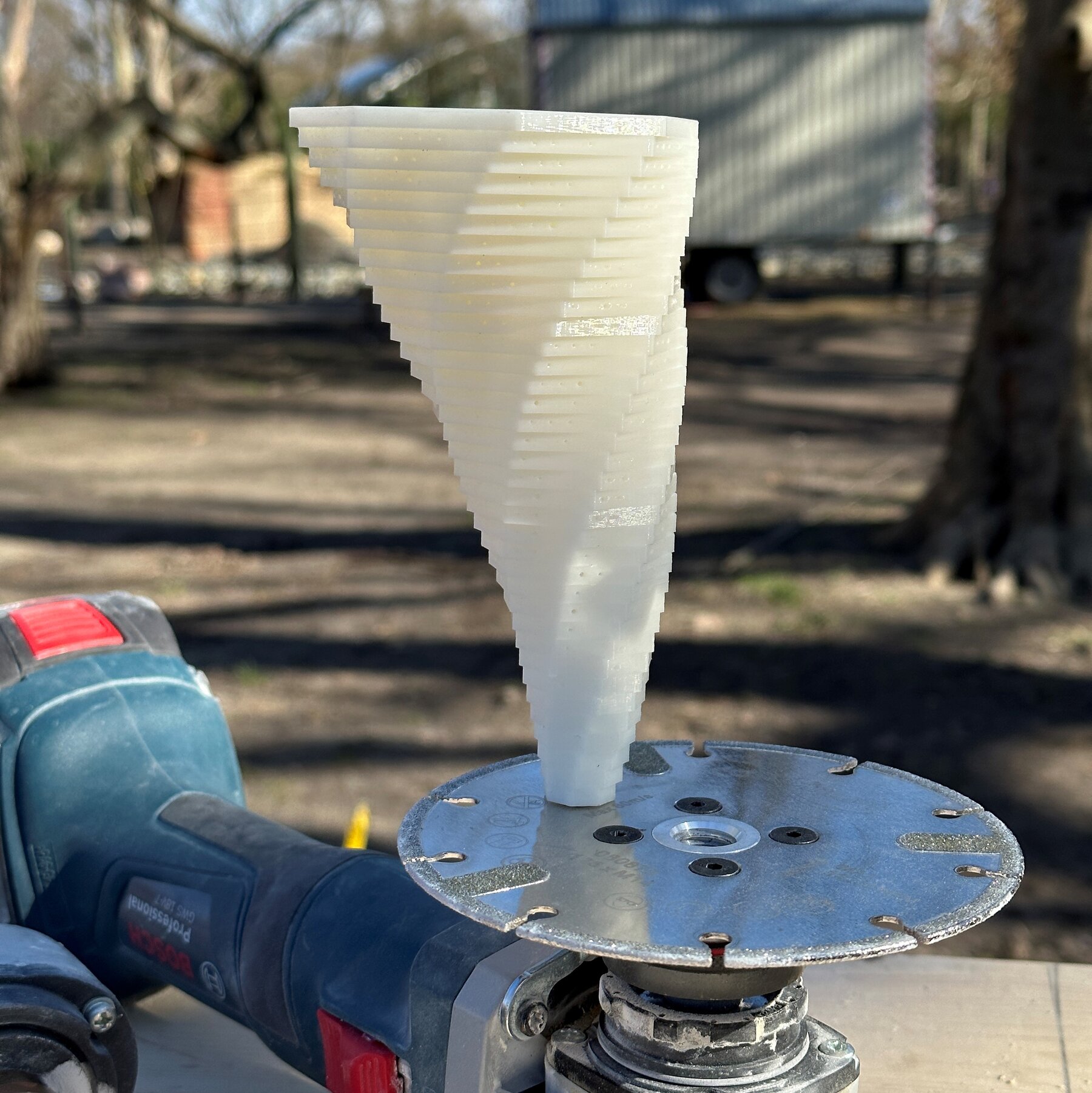
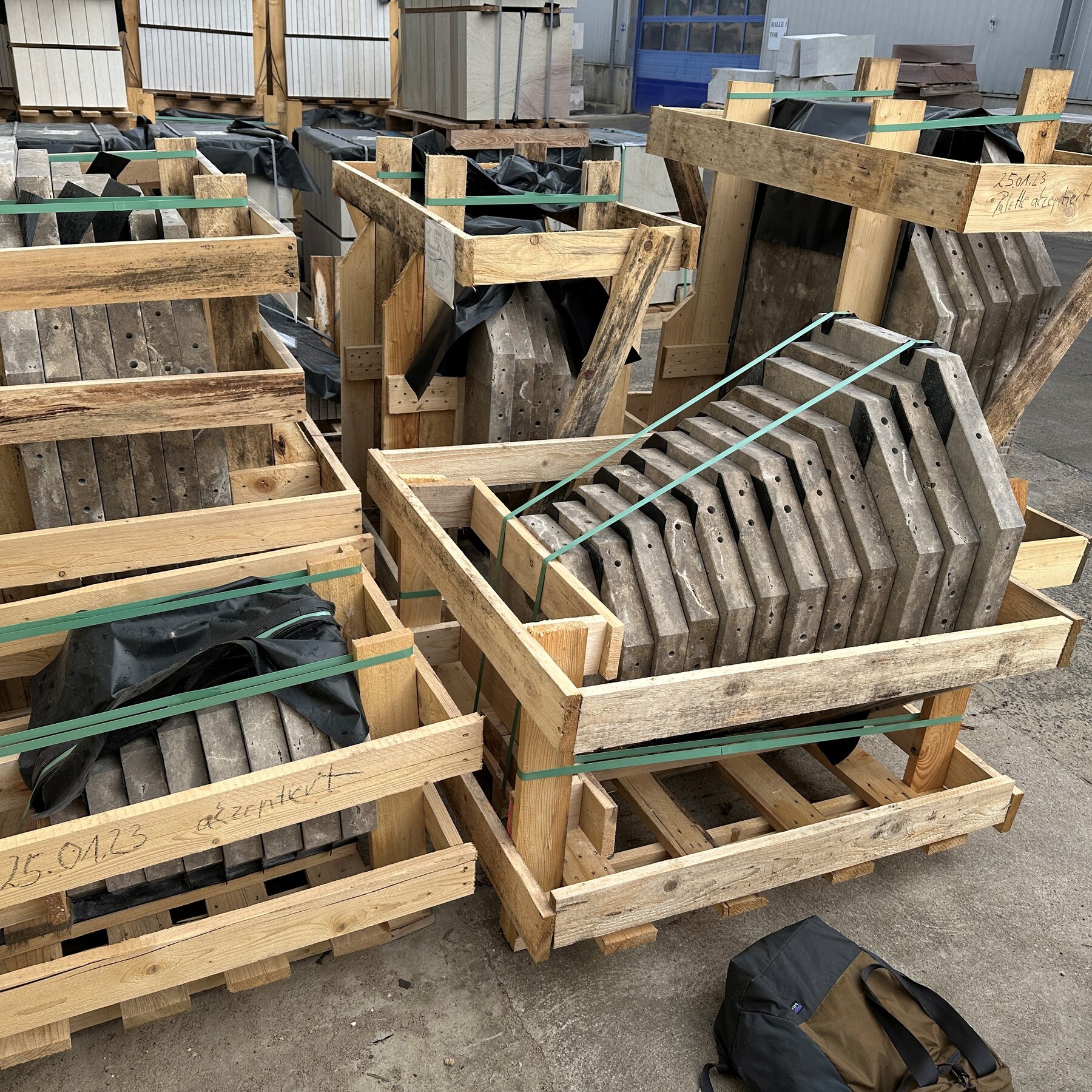
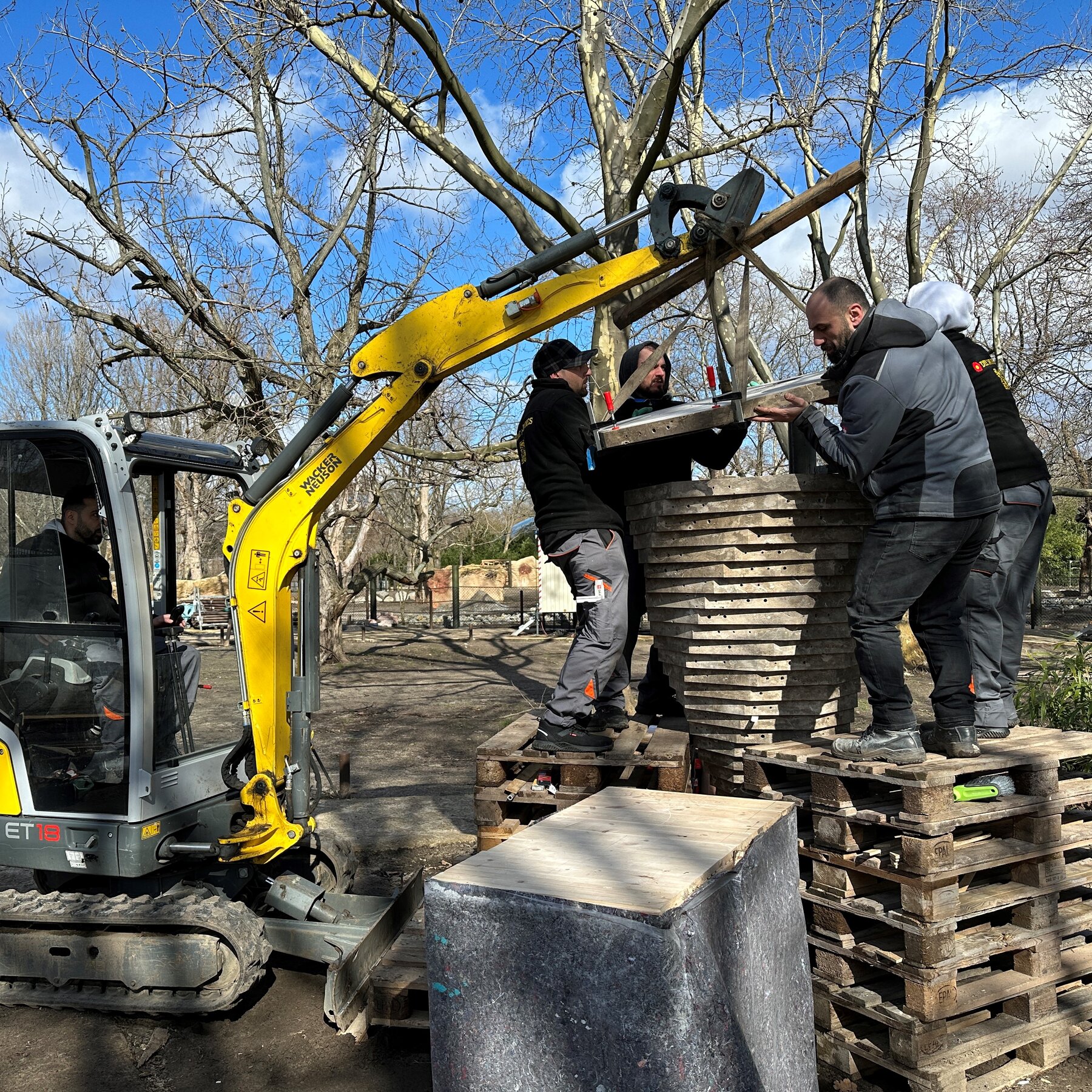
Ein Horn reflects on the principles of Metabolism, a post war Japanese architectural movement that fused ideas about architectural megastructures with those of organic biological growth. Many buildings where then inspired by animal architecture but adapted for human use. Ein Horn, as a modular architecture for insects, reverses the concepts of Metabolism, giving them back to fauna.
As the new Rhinoceros facility is a sanctuary dedicated to endangered species, this artwork adds functionality meant to support some often-overlooked native species. Pollinating insect populations, vital to our ecosystems are being widely decimated by human activity. The sculpture takes the opportunity of its twisted levels design to be a potential refuge for pollinating insects. Hundreds of holes of different diameters are drilled in the stone and positioned under the roofed areas, protecting them from being wet. They will accommodate different species of native tube nesting insects such as red mason bees (Osmia sp), leafcutter bees (Megachilid sp) or bell bees (Chelostoma sp).
The basic shape of each storey is an octagon, a geometrical form that traditionally symbolizes renewal, rebirth, regeneration, and transition. This idea of rebirth is here underlined by an engraved French language wordplay. Le Monde Encore Né literally translates as “The world reborn” but can be also read as “The Gored World” (Le Monde Encorné), which is engraved on the other side of top layer octagon’s edge. In this sense it refers directly to conceptual artist Piero Manzoni’s iconic work “Socle du Monde”, 1961: a large metal plinth, inscribed 'The Base of The World'. It announces that the whole world is a work of art.
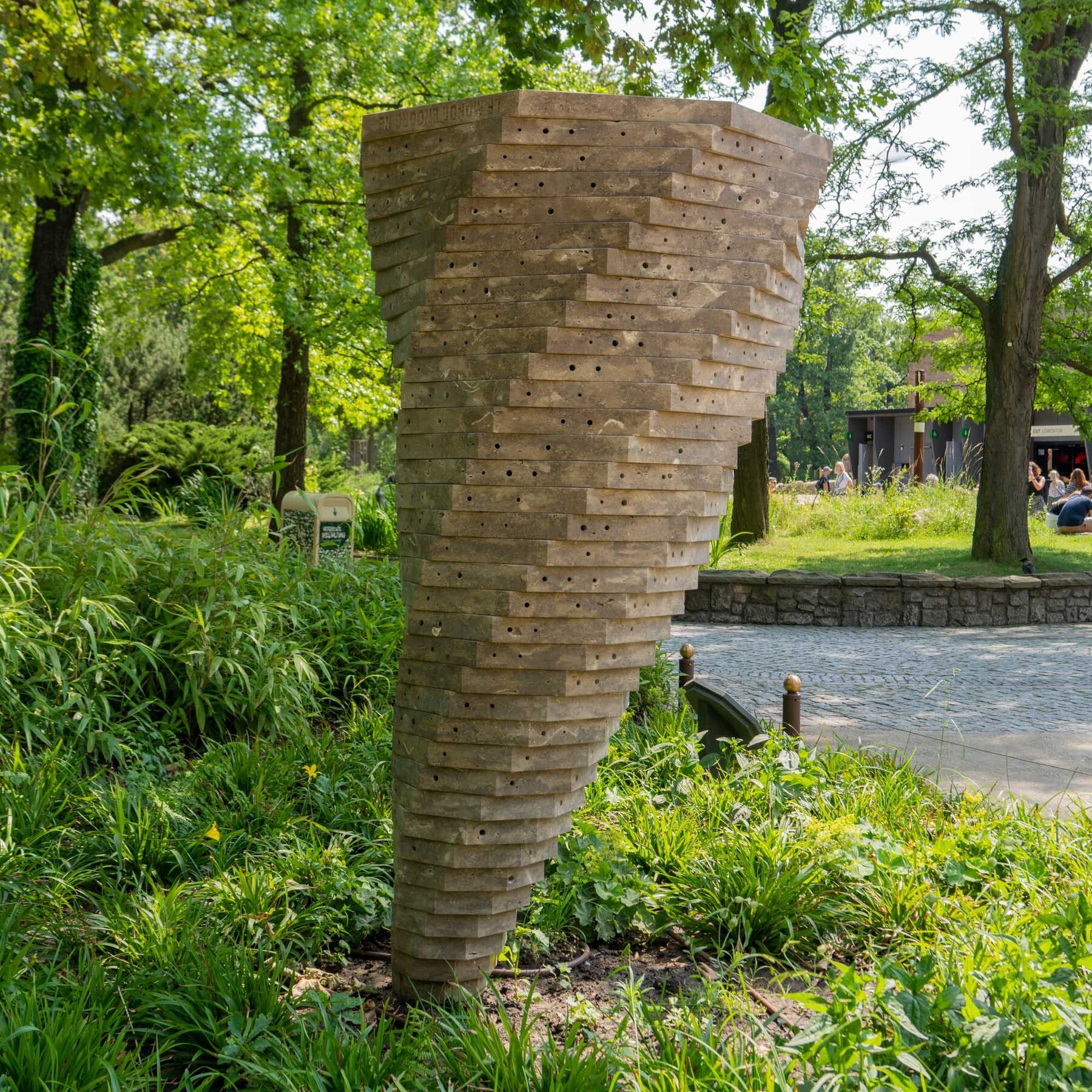
Editor: Where can we see other works from you?
Adrien Missika: In many places scattered around this planet. Some of my works are displayed in some Museums like the Centre Pompidou in Paris or the Kunsthaus Zürich. I participate to numerous biennials and group or solo exhibitions in different art spaces (Kunsthalle, Museums, galleries). I recently won another Kunst am Bau competition so another pubic sculpture should be soon visible in Berlin Neukölln at the new house of the Bundesverband Deutscher Gartenfreunde (BDG).
Editor: Thank you very much, Mr. Missika for giving us an insight into your work and for your great contribution to the new rhino pagoda.
![[Translate to English:] [Translate to English:]](/fileadmin/_processed_/8/f/csm_IMG_1936_8d808f2545.jpg)